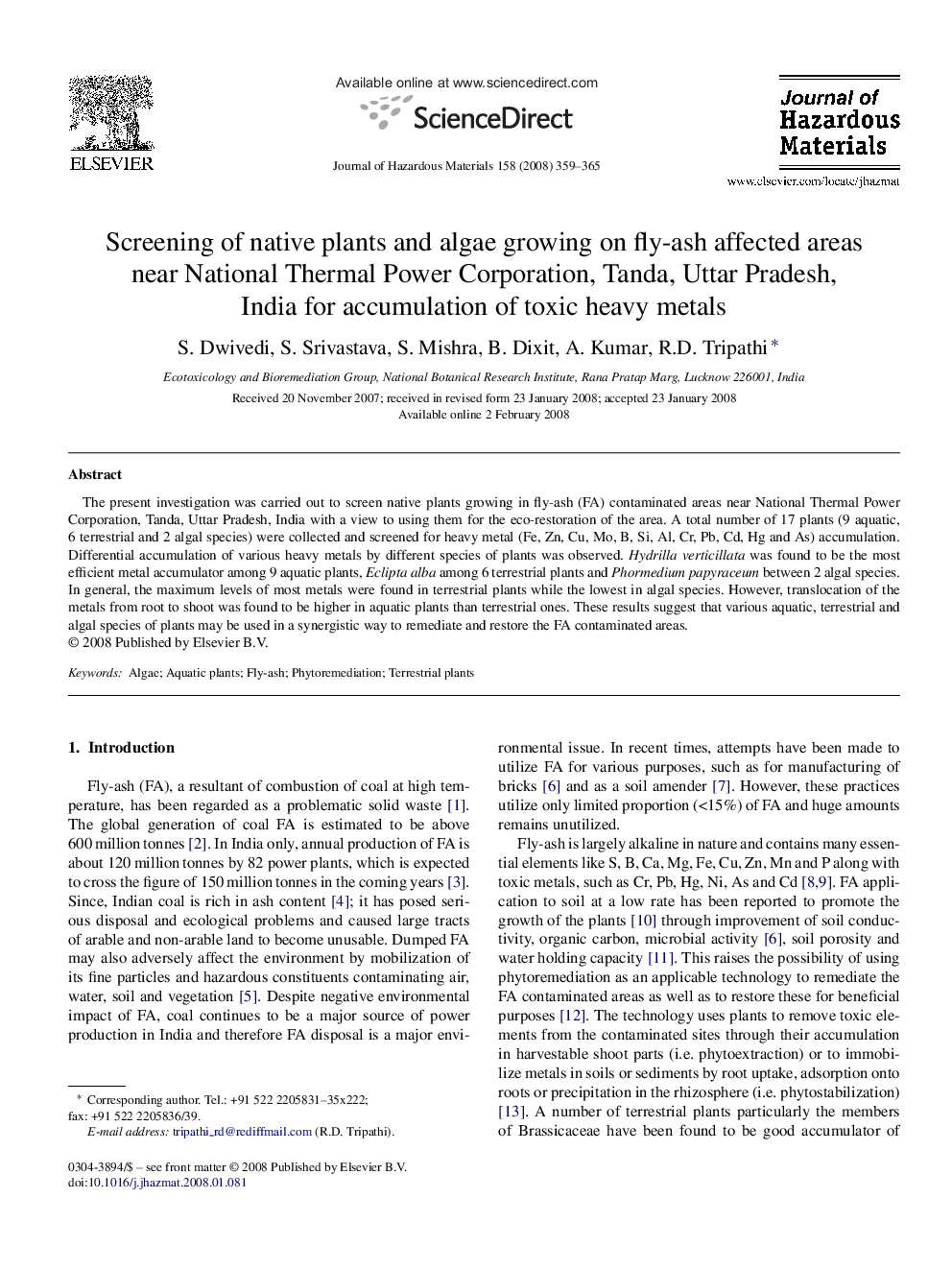| Article ID | Journal | Published Year | Pages | File Type |
|---|---|---|---|---|
| 583298 | Journal of Hazardous Materials | 2008 | 7 Pages |
Abstract
The present investigation was carried out to screen native plants growing in fly-ash (FA) contaminated areas near National Thermal Power Corporation, Tanda, Uttar Pradesh, India with a view to using them for the eco-restoration of the area. A total number of 17 plants (9 aquatic, 6 terrestrial and 2 algal species) were collected and screened for heavy metal (Fe, Zn, Cu, Mo, B, Si, Al, Cr, Pb, Cd, Hg and As) accumulation. Differential accumulation of various heavy metals by different species of plants was observed. Hydrilla verticillata was found to be the most efficient metal accumulator among 9 aquatic plants, Eclipta alba among 6 terrestrial plants and Phormedium papyraceum between 2 algal species. In general, the maximum levels of most metals were found in terrestrial plants while the lowest in algal species. However, translocation of the metals from root to shoot was found to be higher in aquatic plants than terrestrial ones. These results suggest that various aquatic, terrestrial and algal species of plants may be used in a synergistic way to remediate and restore the FA contaminated areas.
Related Topics
Physical Sciences and Engineering
Chemical Engineering
Chemical Health and Safety
Authors
S. Dwivedi, S. Srivastava, S. Mishra, B. Dixit, A. Kumar, R.D. Tripathi,
